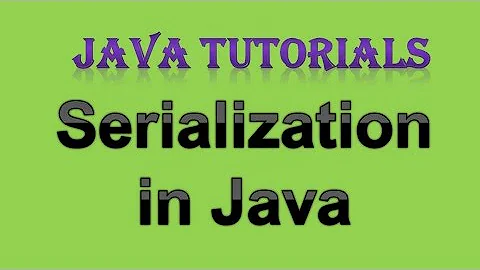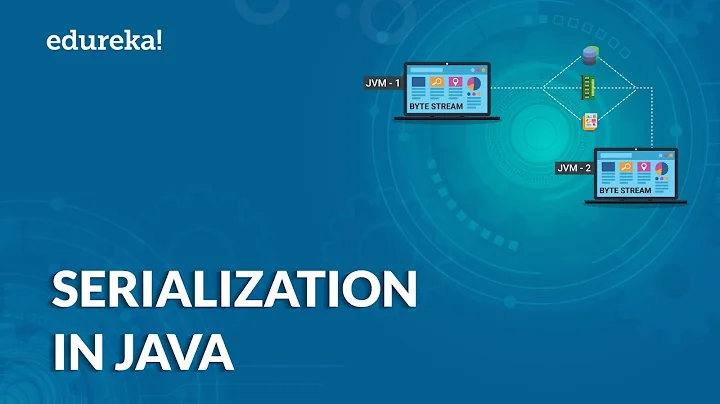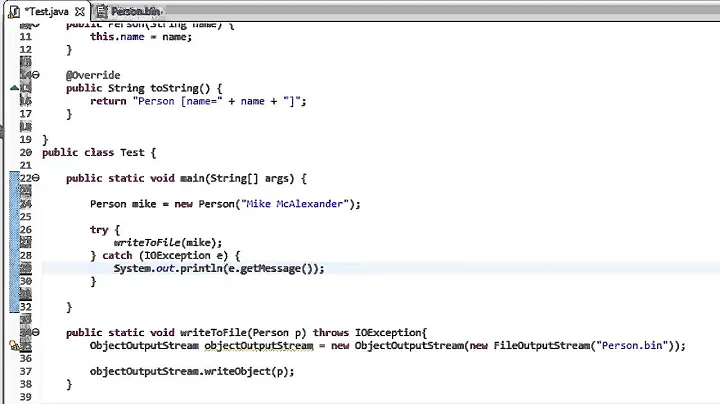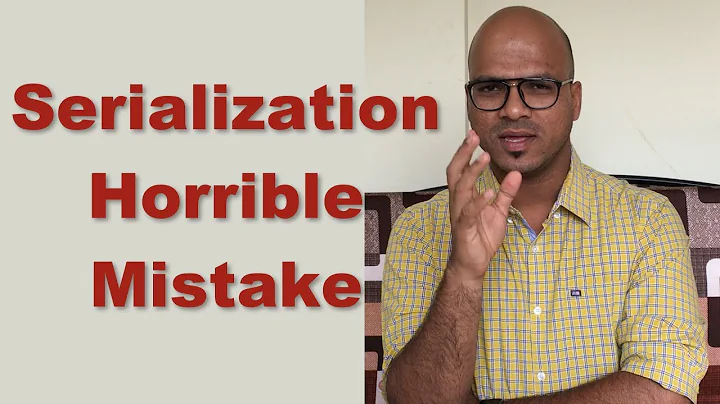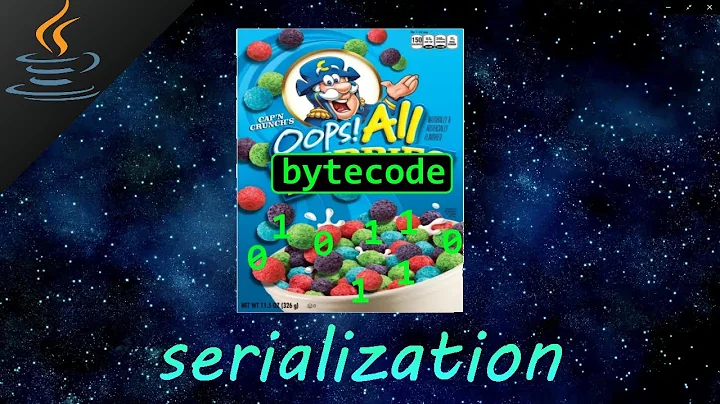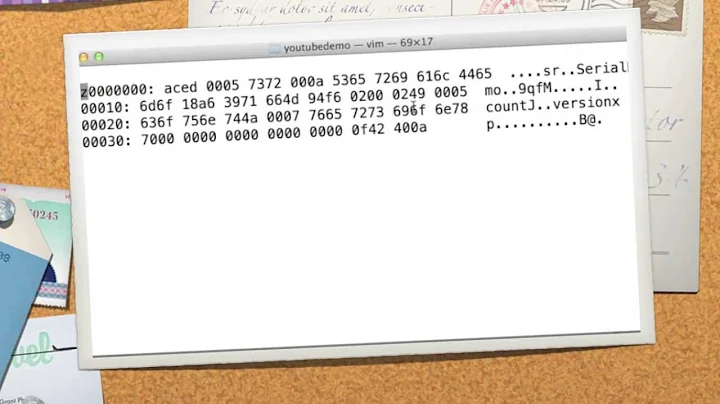How serialization works when only subclass implements serializable
Solution 1
according to the Serializable javadoc
During deserialization, the fields of non-serializable classes will be initialized using the public or protected no-arg constructor of the class. A no-arg constructor must be accessible to the subclass that is serializable. The fields of serializable subclasses will be restored from the stream.
also, serialization exception is only thrown if the class being serialized is not serializable. having non-serializable parents is fine (as long as they have a no-arg constructor). Object itself isnt Serializable, and everything extends it. the quote above also explains why you get different values for the value field - the no-arg constructor for the parent class is set, which sets the value field to 10 - the field belongs to the (non-serializable) parent so its value isnt written to/read from the stream.
Solution 2
If your MyClass holds reference to an object of non serializable class you will get NotSerializable exception at run time. To test, modify MyClass so that it holds a reference to an object of NewClass1. If you run again it will throw an exception.
Deserialization is essentially creating an instance of a serializable class and restoring its properties. During this process the constructor of the serializable class is not called. Rather the no arg constructor of first non serializable super class is called.
In your case the no arg constructor of NewClass1 assigns 10 to its instance variable i. So, during deserialization it's printing 10 instead of 20.
Related videos on Youtube
Ravi
Check-out my open source library : rabbitFT : It is a library for sharing file through SFTP or Sharepoint channel.
Updated on January 12, 2020Comments
-
Ravi over 4 years
Only subclass has implemented
Serializableinterface.import java.io.*; public class NewClass1{ private int i; NewClass1(){ i=10; } int getVal() { return i; } void setVal(int i) { this.i=i; } } class MyClass extends NewClass1 implements Serializable{ private String s; private NewClass1 n; MyClass(String s) { this.s = s; setVal(20); } public String toString() { return s + " " + getVal(); } public static void main(String args[]) { MyClass m = new MyClass("Serial"); try { ObjectOutputStream oos = new ObjectOutputStream(new FileOutputStream("serial.txt")); oos.writeObject(m); //writing current state oos.flush(); oos.close(); System.out.print(m); // display current state object value } catch (IOException e) { System.out.print(e); } try { ObjectInputStream ois = new ObjectInputStream(new FileInputStream("serial.txt")); MyClass o = (MyClass) ois.readObject(); // reading saved object ois.close(); System.out.print(o); // display saved object state } catch (Exception e) { System.out.print(e); } } }One thing, which I noticed here is, parent class is not serialized. Then, why didn't it throw
NotSerializableExceptionindeed it is showing followingOutput
Serial 20 Serial 10Also, output differ from
SerializationandDe-serialization. I just only know, it is because of parent class has not implementedSerializable. But, If anyone explain me, what happens during object serialization and de-serialization. How it changes the value ? I'm not able to figure out, also I have used comment in my program. So, if I'm wrong at any point, please let me know. -
Ravi over 11 yearsYes, in this scenario, i'm getting
NotSerializableException, but not in current scenario. Please go through my code. -
Ravi over 11 yearsyes , it will. That is why, my question wasn't that. I have changed the code from the original one. Please go through my code.
-
Ravi over 11 yearsMy question is not exactly, why my code is not showing
NotSerializableException?? rather I'm asking, how these output differ, background of serialization and deserialization in current code. -
PC. over 11 yearsHmmm... I understand what are you trying to dig. Your current scenario works because you have a default constructor in the base class. JVM is little intelligent in this case and just neglects the int present in base class. While deserializing it calls the default constructor. If you add a pram to the constructor of the base class, still the object will be serailized, but I guess you will get an exception while deserializing.
-
Sandeep Panda over 11 yearsAdded some more info to my answer. Hope it helps you.


